Swan Lake’s new life: how unique Kazan water bodies rehabilitated
The million city of Kazan is adorned with water bodies to whose embankments have been paid a lot of attention in recent time. The lakeside of one of the relatively young water bodies, the Lake of Swans, expects improvement. This year the hydrotechnical stage of rehabilitation of the Swan Lakes' system has been completed in these ponds, which are 12 km from Kazan, with TAIF PJSC and Kazanorgsintez PJSC. The area of the water surface of the favourite holiday destination of citizens of Kazan has increased almost 9 times – from 4,2 to 36 ha. Realnoe Vremya tells the details.
Piece of nature in sand dunes
The Swan Lakes are over 200 years old. They appeared between sand dunes. This is why they are called interdunal. The sand became mainly overgrown with pines, and the water started to accumulate only in lower sandbanks. Leaves, pieces of clay went down, this formed sediment. The Swan Lakes consist of four water bodies connected with each other with winding flows: the Small Swan Lake, the Great Swan Lake, the Light Swan Lake and the Dry Swan Lake. The lakes' depth has always been small – from 1 to 4 metres.

The ecosystem of interdunal water bodies is very fragile. They are fuelled by rainfall and run-offs. The lakes' area reached over 70 ha, in spring it expanded to 100 ha. Citizens of Kazan liked these places for their unique nature, which was very close to the city. The lake is rich in diverse creatures: wild ducks nest in the thick riverside undergrowth. Rare and protected plant species grow along the banks: wood anemone, wild iris and others.
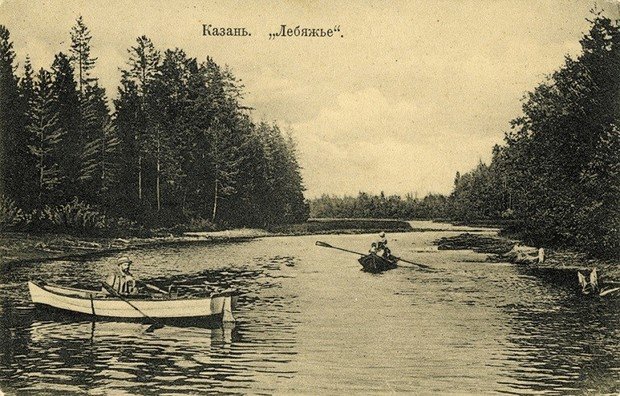
In the 50-60s, citizens of Kazan liked to go by boat or catamaran along the bank of Swan Lakes. Kindergarten kids and schoolchildren who were having a rest in neighbouring camps and resorts came here to spend all summer. Sunny resort for kids, which belongs to Kazanorgsintez PJSC, is still next to the Swan Lakes, where over 200 children rest every year.
Sabantuy was held in the Swan Lakes, theatre performances were given every year. Maslenitsa was traditionally celebrated on the water body's banks in winter, sports amusements were organised.
Attempts to return life to Swan Lakes
The Swan Lakes gradually began to change. As Head of Kazan Federal University's Department of Environmental Engineering and Water Resources Management Nafisa Mingazova explained, the water bodies become smaller because they're shallow. ''The have lakes a thin layer of sludge. This is why they're vulnerable. They silt up, overgrow due to shallowness. The national park of Chuvashia also has such lakes. Even their names are similar, it's called the White Swan Lakes. The difference is that those water bodies are already turning into swamps and actively overgrowing,'' told Nafisa Mingazova.
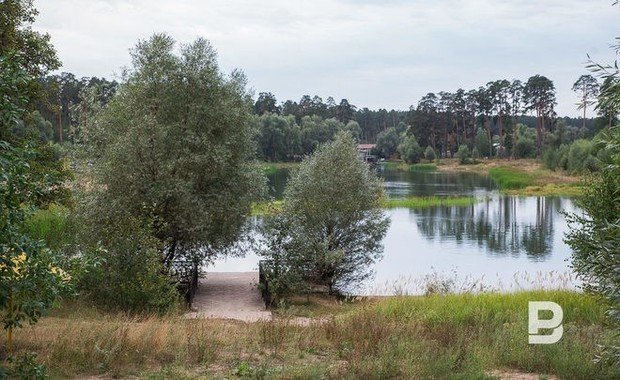
The lakes' shrinkage accelerated the construction of a highway and a railway, which began in the 70s. As a result, the catchment area was cut and reduced almost 10 times. It became notable in the 90s that the water level heavily fell. Scientists formulated several hypotheses about why the lakes were disappearing. According to one of them, it was supposed the water was going towards Yudino Quarry, where sand was dug in the 70s. In the 90s, the pit of this quarry was almost 20 metres in depth, water appeared at the bottom soon. Scientists established it was the first or second soft water category. The new lake was called Emerald.
In the 90s, when Kamil Iskhakov was the head of the Kazan administration, there was made an attempt to restore the water surface of the Swan Lakes. In 1995, water supply from the Yudino Quarry began after building a pumping station and laying a pipe. The lake began to recover. However, the fresh water didn't benefit all water bodies. The Great and Small Swan Lakes were simply diluted with the new water, the Light Swan Lake quickly overgrew with plants. Canadian waterweed began to grow in the Dry Swan Lake, where the cattle were already pastured and there was little water. Its bushes ran through the pond from top to bottom. It was hard to go by boat.
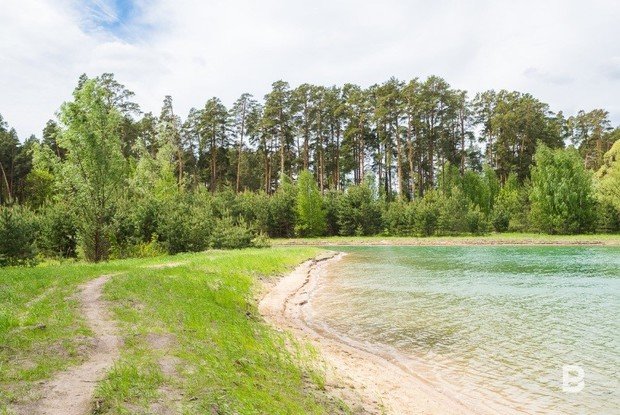
Water from the Yudino Quarry was supplied to the Swan Lakes until the early 2000s. Then the connection system with the Yudino Quarry was devastated: the pipe and pumping station were dismantled. The Small Swan Lake dried up almost immediately, water in the Great Swan Lake reduced too. Water was supplied to the Small Lake from an artesian well for some time to fight the fire. The rest of the three water bodies continued reducing. Nafisa Mingazova said in the media about the negative consequences of this decision many times. The chemical composition of water in the Small Swan Lake changed due to the artesian mineralised water, which affected the water body's flora and fauna.
Successful Swan Lake rehabilitation attempt
First Tatarstan President Mintimer Shaimiev also supported the rehabilitation of the system of Swan Lakes. In 2016, the first stage of the Swan Lakes's update began under TAIF PJSC Director General Albert Shigabutdinov' careful supervision and with his personal participation. Kazanorgsintez PJSC was the client, Tatmelioration PJSC was the designer. The full recovery of the cascade of lakes was estimated at 250 million rubles. The improvement of the water body was dedicated to the Water Zone Protection Year in Tatarstan.
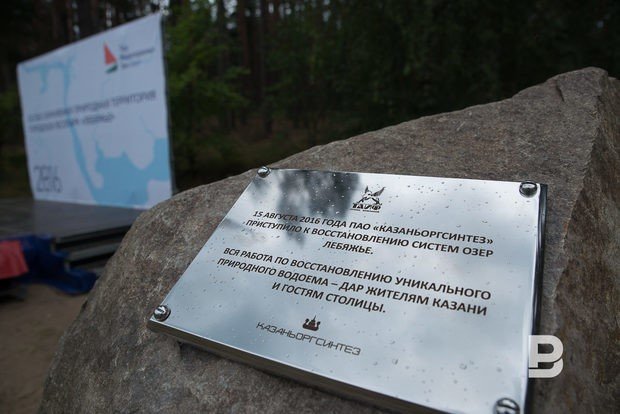
''There was done a set of research to make well thought out decisions to ecologically rehabilitate the water bodies. The ecologic research and examinations, including geological, were done in 2014-2016. In November 2016, hydrometeorological and hydrogeological examinations were carried out on the territory,'' Realnoe Vremya was said in the Tatarstan Ministry of Ecology and Nature Resources. Before the work, there were also done calculations of the annual volume of water that was pumped in, which were necessary to maintain the water level in different periods of the year.
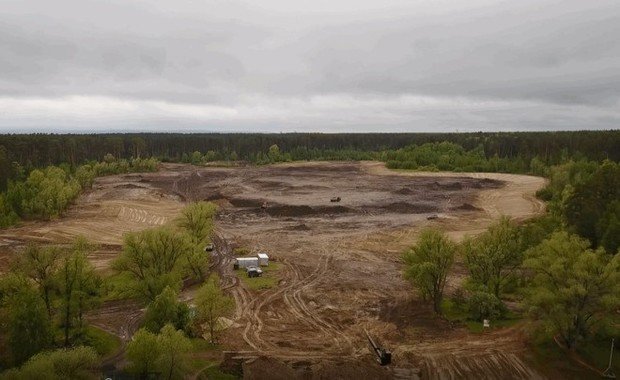
By the beginning of the works, the Swan Lakes had consisted of two water bodies divided by a dam. One operating lake's water level was about 67,5, while the required level is 69,5. It was fuelled from two wells, though previously there were three. The second part of the lake dried up and overgrew with grass and trees on the territory of some 4 hectares.
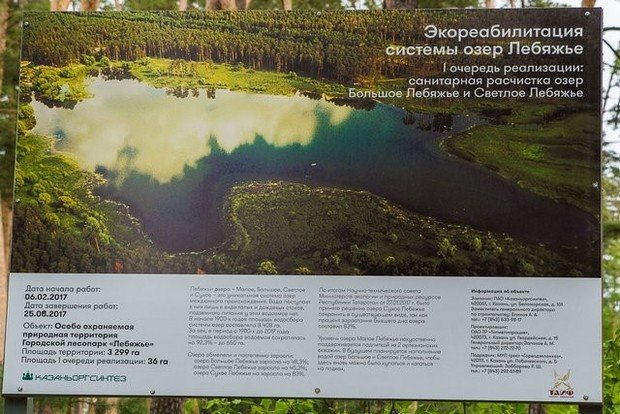
The third attempt to rehabilitate the Swan Lakes was much bigger than the first two. The territory of Swan Lakes and the water bodies' basin was cleaned, the protective layer of sludge and clay was conserved. As Realnoe Vremya was told in the Kazan Executive Committee's Committee for External Improvement, a special three-layer screen consisting of bentonite clay-based bentonite mats was laid at the bottom of two lakes.
Bentonite clay is finely dispersed clay consisting of at least 60-70% of montmorillonite minerals, which have viscous, adsorbent and catalytic properties.
A geomembrane of 0,6 mm thickness (Editor's Note: it's geosynthetic, an insulating material used in construction for waterproofing) was the second layer of the screen, geotextile was the third one. The hydro-insulation screen had a protective layer of soil of 50-70 cm thickness.
Geomembrane is a synthetic membrane liner, insulating material used in construction for water proofing. Geotextile is one of the types of geosynthetics; it's also a non-woven fabric manufactured by needle punching, heat and hydro bonding from polypropylene and/or polyester threads.
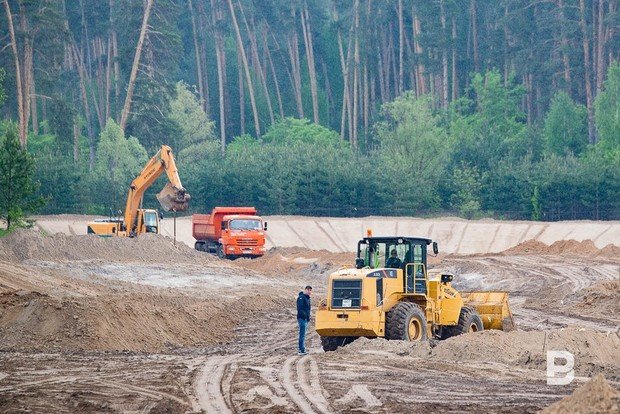
A pumping station with a capacity of 800 cubic metres per hour was built to fill the lake with water, water pressure is 63 m. Two pumps with a capacity of 160 kW were installed to pump water. Kazanorgsintez PJSC laid its own pipe of 1,5 km in length underground from Emerald to the Swan Lakes. Water goes to the rehabilitated water body through it. To fill the lakes with water, the pump worked round the clock for about 120 days. Almost 1,5 million of cubic metres of water was pumped in the ponds.
Water will be taken from the Emerald Lake and pumped in the Swan Lake for 2-3 months every year. The Yudino Quarry, unlike the Swan Lake, has a hydraulic connection with the Kuybyshev Reservoir. This is why it won't shrink if it shares water with its neighbour.
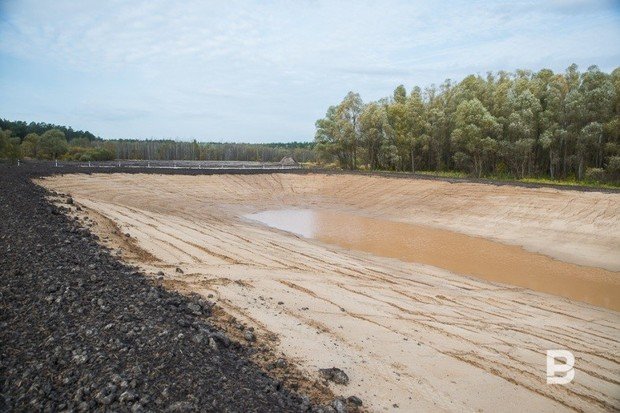
Water filling in the lakes began in 2017. It was supplied underground through a pipe of 40 cm in diameter and 1,5 km in length. The rehabilitation of lakes allowed to increase the area of water bodies from the bank zone from 8 to 36 hectares.
''The beautification should be gentle, natural''
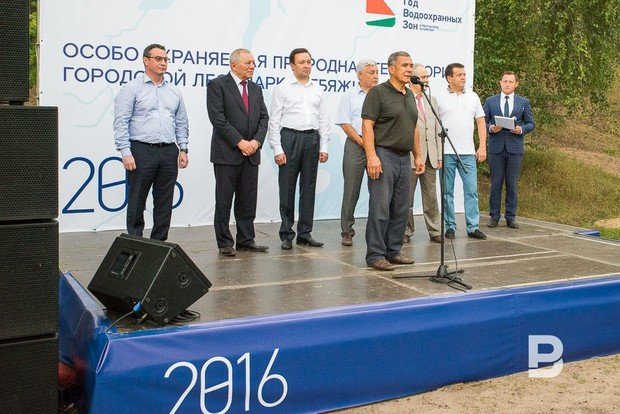
Before starting the work on rehabilitation of the Swan Lakes in 2016, Tatarstan President Rustam Minnikhanov thanked TAIF PJSC and Kazanorgsintez PJSC for their readiness to complete the main part of the beautification programme of the Swan Lake's urban forest. Then the president noted: ''We don't have any other unique natural phenomenon like Swan Lake. I'm sure there will be real solutions by the next year, the lakes will be rehabilitated. We plan to rehabilitate all the lakes we had, beautify the adjacent territory. It will take time. But I'm convinced it will become one of the favourite places for citizens of the Tatarstan capital and guests of the city.''
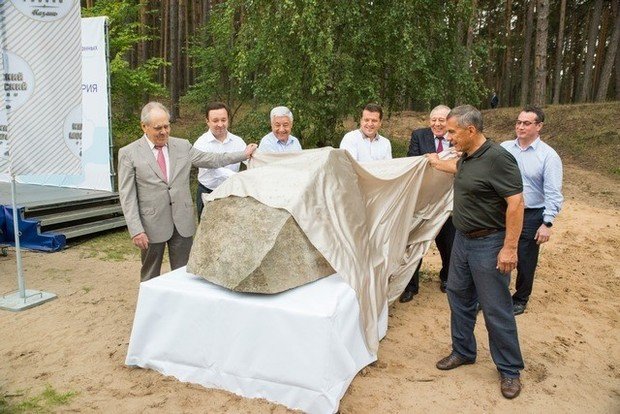
TAIF PJSC Director General Albert Shigabutdinov noted before the project began that serious work was ahead. ''All enterprises located next to the Swan Lake on the 3-ha territory will need to put effort to put everything in order in the short term and to perform the president's task – to make this the best and favourite holiday destination for Kazan citizens. We have all possibilities for this purpose,'' claimed Albert Shigabutdinov.
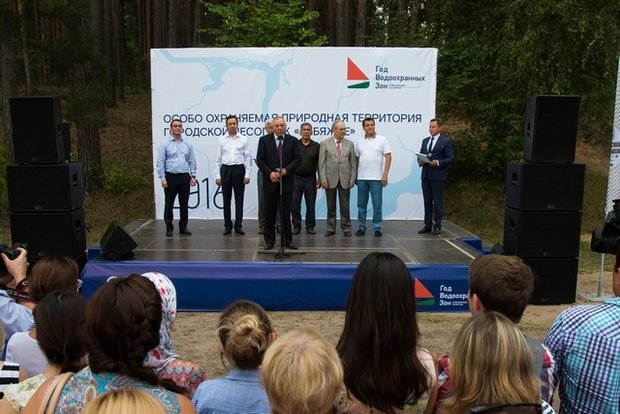
Rustam Minnikhanov's expectations lived up: the Swan Lakes were refilled with water, the hydrotechnical stage of the works done to revive the water bodies was completed with the help of TAIF PJSC and Kazanorgsintez PJSC by summer 2018.
The Ministry of Ecology of Natural Resources of the Republic of Tatarstan noted the uniqueness of the rehabilitation of the natural water body. There aren't analogues of the work done in ecological rehabilitation. ''The project is also unique because all power was consolidated, leading scientific organisations were involved in discussion before making a correct decision the future of the unique territory will depend on,'' the Ministry of Ecology of Natural Resources of the Republic of Tatarstan said.
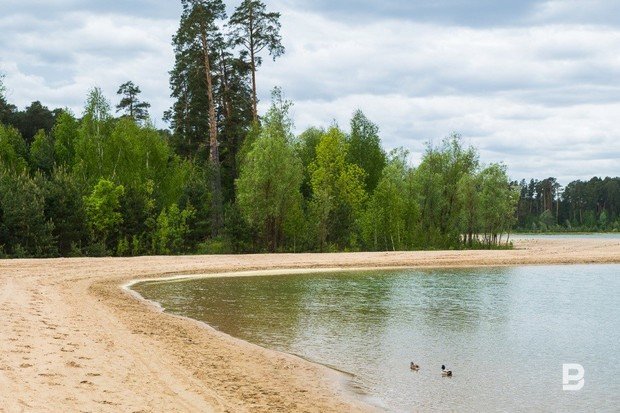
The beautification of the bank area of Swan Lakes remains open. The Kazan Executive Committee's Committee for External Improvement replied to Realnoe Vremya that ''the project will be created and the territory adjacent to Swan Lake water bodies will be improved when the source of financing is chosen.''
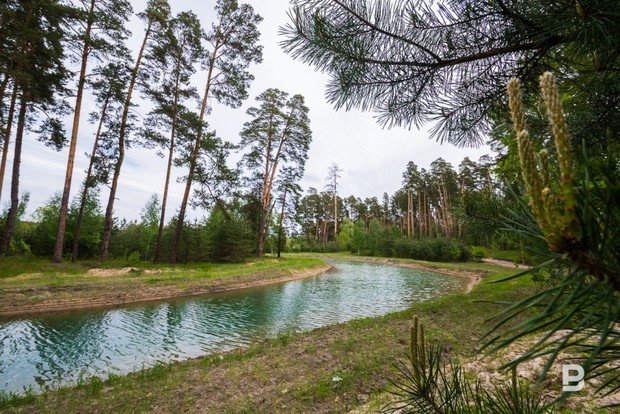
Nafisa Mingazova noted that an ecological approach should be used to beautify the Swan Lake because a lake is an ecosystem, not a basin filled with water. ''To create an ecosystem, it's necessary to fill the lake with plants, fauna, plankton, phytoplankton. Plants need to be planted, otherwise we will get only artificial ponds,'' the scientist added.
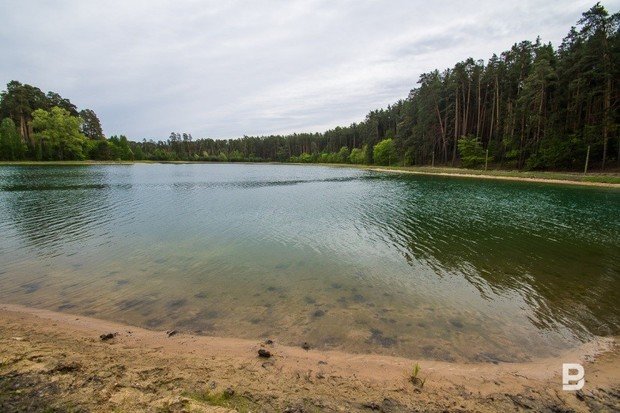
As for beautification of the bank area, this work should be done carefully because the lakes are located in a specially protected area. ''The beautification must be very ecological: without using bitumen, major construction. Sand or wood can be used, the beautification should be gentle, natural, without bitumen embankments. We can adorn the bank with wooden bridges, flooring, benches, gazeboes,'' Nafisa Mingazova shared her opinion.
However, the absence of beautification doesn't impede citizens of Kazan from resting on the bank of the rehabilitated Swan Lake. The celebration of Sabantuy on the territory next to the water body continued this year, it was interrupted during construction works. A new road was laid for the festival in the Swan Lake. The guests were welcomed by Zabivaka Wolf and other characters, a site for national competitions was prepared. The main stage was installed on the bank of the Light Swan Lake, the stands could host 3,000 people. And life around the picturesque water body began in full swing again.